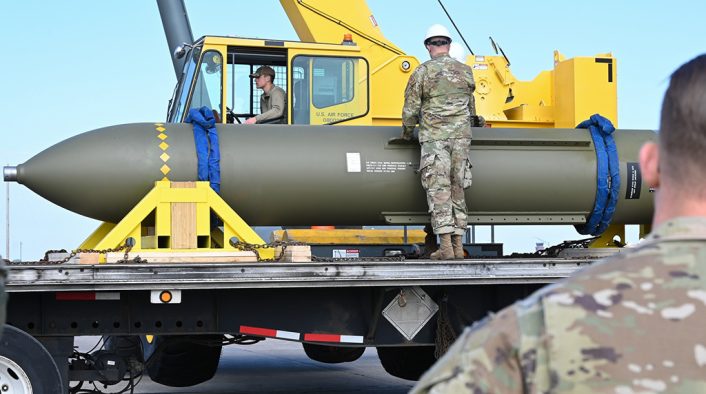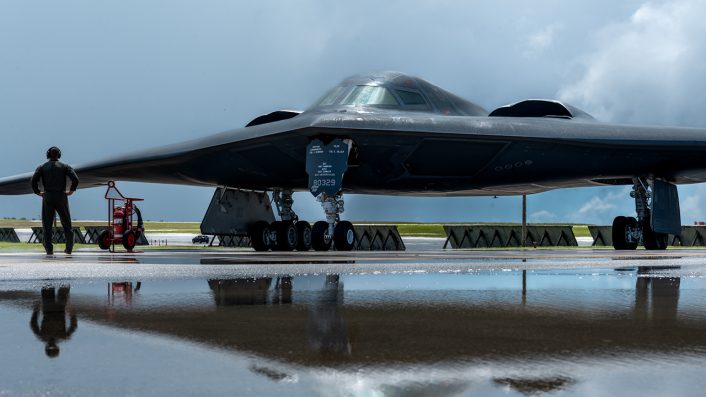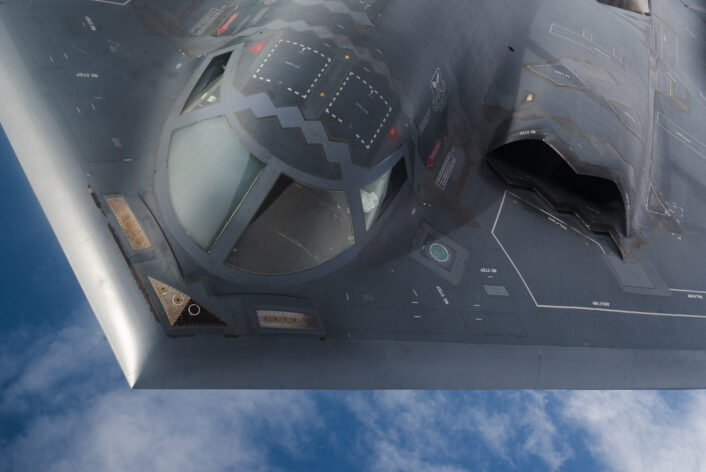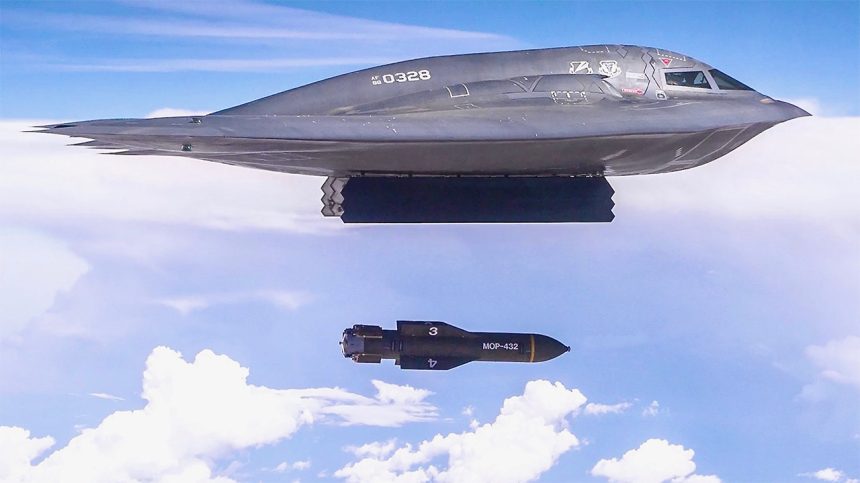The B-2 bombers operating out of Diego Garcia have been reportedly using 30,000 lb GBU-57 Massive Ordnance Penetrators against underground Houthi targets.
Since late March 2025, six B-2A Spirit stealth bombers have been deployed to Diego Garcia, the strategic U.S. outpost in the Indian Ocean. From there, the bombers have been involved in the strikes against the Iranian-backed Houthi militias in Yemen.
Initially, some reports mentioned that the B-2s might have been employing AGM-158 JASSM (Joint Air-to-Surface Standoff Missile) cruise missiles. New reports, however, mention that the bomber might have been using also one of its exclusive weapons: the 30,000 lb GBU-57 Massive Ordnance Penetrator (MOP).
Jennifer Griffin has reported that B-2 bombers operating from Diego Garcia have been employing GBU-57 Massive Ordnance Penetrators (MOPs) against underground Houthi infrastructure targets since early April. The MOP is a highly specialized and limited stockpile weapon, designed… https://t.co/VsjtzbrLIo
— GMI (@Global_Mil_Info) April 16, 2025
The B-2 Spirit is currently the only aircraft in the U.S. inventory cleared to operationally carry and deploy the MOP, with each bomber able to carry two bombs. If the reports are correct, this would also be the first time the weapon has been used in combat.
When the news about the deployment of the B-2 for the U.S. strikes against the Houthis, with 30% of the fleet now at Diego Garcia, many criticized the move, calling it a waste of resources. However, the use of the B-2 and the MOP in Yemen sends a clear message to Iran as the U.S. government negotiates a nuclear deal with Iran for the dismantlement of the nuclear and missile programs.

GBU-57 MOP
The GBU-57 Massive Ordnance Penetrator (MOP) is a 30,000-lb (14,000 kg), 20-foot long GPS-guided bomb said to be able to penetrate 200 feet of concrete before exploding. The weapon is exclusively available to the B-2 Spirit, which can carry two MOPs in its internal bomb bay.
The development was commissioned following the 2003 Iraq War, where existing bunker buster bombs were found to be inadequate for the most hardened structures. The U.S. Air Force describes the weapons’ function as “reaching and destroying our adversaries’ weapons of mass destruction”.
This makes the GBU-57 the weapon of choice in case of attack on buried targets, such as the Iranian bunkers where the nuclear program is being worked on. It is being reported that the two biggest uranium enrichment sites in Iran are the Fuel Enrichment Plant at Natanz, located about three floors underground, and Fordow, dug far deeper into a mountain.
Also, one of the shots gives a pretty clear shot of the weight and types of fillers in the bomb. 4400 lbs of AFX-757, an explosive recently developed by the AFRL for use in penetrating bombs, & 762 (752?) lbs of PBXN-114 for a total of ~5,162 lbs of HE filler. 2/2 @FranticGoat pic.twitter.com/mzuXGwKTWk
— IntelWalrus (@IntelWalrus) May 3, 2023
The secretive weapon has been upgraded in the early 2010s and, although the type of upgrades it received were not made public, it was reportedly equipped with new fusing and tail fins needed to give it greater ground penetration. Sources report that the GBU-57 has GPS/INS guidance and a large penetrator smart fuse to allow the warhead to reach a set depth before triggering the explosion.
Images of the MOP are pretty rare, with only a few released throughout the years. In 2013, we published here an interesting photo of a B-2 sitting next to a GBU-57. In December 2018, we found footage of a B-2 dropping a MOP in a video of the 393rd Bomb Squadron, one of the units that operate the Spirit stealth bomber as part of the 509th BW.
In April 2023, the 131st BW posted some photos including one depicting an inert GBU-57, used for training purposes. A month later, the 509th BW posted new photos, this time showing a live GBU-57.

Diego Garcia
The deployment of the six B-2s to Diego Garcia was not announced, and was only exposed through OSINT (Open Source Intelligence) as the bombers communicated with air traffic control while enroute to their destination. Information from these communications was pieced together with altitude reservations (ALTRVs) and the USAF tanker movements that support long range bomber operations to provide a clearer overall picture.
The first flight of aircraft began the transit on Mar. 24, 2025, with four aircraft reported. One of them declared an in-flight emergency and diverted to Joint Base Pearl Harbor–Hickam, co-located with Honolulu International Airport. The aircraft has since returned to the U.S.

The remaining three bombers continued the journey, supported by tankers which were positioned at RAAF Base Amberley, and were next heard in contact with Australian air traffic control. Notably, Amberley is one of the bases in the area which can host the B-2 Spirit.
Hours later, additional bombers departed the U.S. on the same route via Australia to Diego Garcia. Initially, it was difficult to determine how many B-2s have actually touched down at the remote outpost, however satellite imagery later revealed the presence of at least six bombers.
Few days later, the U.S. Air Force acknowledged that the B-2s were indeed taking part to the strikes against Houthi targets.
Update
A U.S. official, speaking to The War Zone, mentioned that the GBU-57 MOP has not been employed on targets in Yemen since the beginning of the operation against the Houthis. “Based on current knowledge of what munitions have been used and reports that have made it up the chain of command, my understanding is that the GBU-57 hasn’t been used during this ongoing operation,” a second U.S. official also told the publication.
It is worth noting that the last press briefing by the U.S. Department of Defense about the current operations in Yemen was held a month ago, on Mar. 17. In addition to the munitions being currently used by the stealth bomber during the attacks, also the munitions from last year’s strikes are still unknown.









